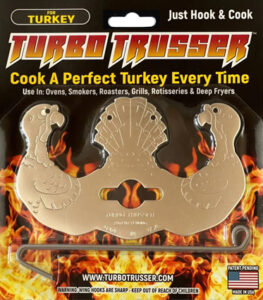Club stores go to great lengths to know their customers. They collect demographic information then add sales data to determine interest in new products. That data indicates that, though buying in bulk produces cost savings for them, club store members are also driven by a concern for the environment. They tend to be vigilant about this as they shop.
Knowing this, club stores have become attentive and have established strict requirements for the packaging of products. Costco and other club stores must review and approve the appearance (including graphics), in-store functionality, and environmental impact of packaging and display trays before they are produced.
Make Sure Your Packaging is Truck to Floor
Corrugated tray packaging is acceptable only when needed to protect the product, and even then it needs to be minimized. Displays have to be ready for immediate floor placement, with no tear panels, tape to be cut. Interior display tray partitions have to hold products securely during handling, yet cannot be glued to the display body, so they can be removed quickly for disposal.
In addition, club store structural strength requirements for displays are higher than for retail, and display materials for specific products have to be able to withstand the freezing and high-moisture environments they will face during shipping and storage.
Club stores have severely reduced the amount of plastic in packaging. For most products, only are acceptable. Stores also specify the type of material that is acceptable: rigid PVC is not acceptable, and RPET is preferred to virgin PET whenever it is feasible.
Even pallets are subject to environmental requirements: loads are to be built without slip sheets and top sheets to eliminate excess waste. When a pallet display of product sitting in a busy aisle is sold out and empty, the store wants its members to see nothing sitting there but the empty pallet.
These are tough standards, and it is essential that your packaging meet them to be accepted. If it doesn’t it is considered unsalable, and even if it is at the warehouse door, it is rejected. Packaging must meet both store approval in advance and the approved standards on arrival.
Find a Partner Who Meets the Challenge
This is new territory for you as a club store novice––learning the requirements, exploring acceptable materials and finding a packaging partner experienced in these materials. This is especially true if your preferred package is one of those subject to the most scrutiny. Your partner, for example, will need to be experienced in molding with RPET––a capability that not every molder can provide––and creating blister cards that meet club store material and graphic standards.
Another club store requirement also complicates things. Club stores tend to work on short deadlines. When they decide to give your product a trial run, to test its sales potential, they want to run that trial quickly.
Unless you have already done your homework by this time, and chosen a capable, experienced packaging partner, you may lose the potentially profitable opportunity. Make sure you have done your homework and find your brand a partner that can meet your demands.



